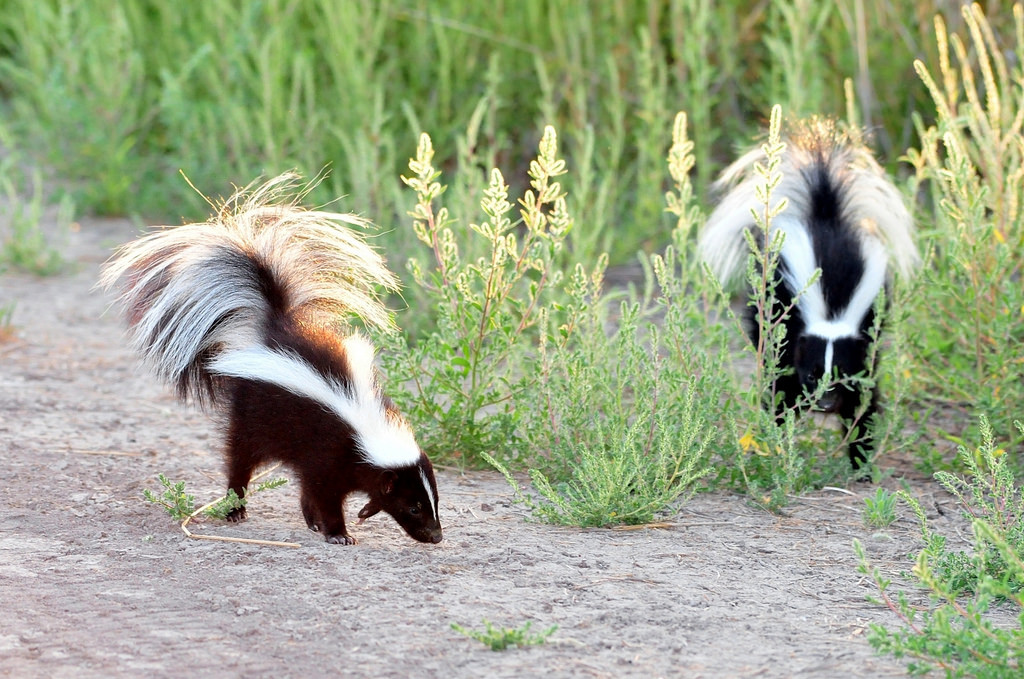NAU researchers have partnered with northern Arizona communities in an effort to learn more about skunk behavior and determine best methods for vaccination against rabies, a fatal disease that can be spread from skunks to other wildlife, pets and humans.
An oral vaccine for skunks is on the horizon and an experiment in northern Arizona may produce an effective method for delivering the vaccination.
Biologist Tad Theimer and intern Tisheena Talk have cameras at 20 Flagstaff and Sedona homes, where placebo-filled foil packets are placed beneath bird feeders, a popular place for skunks and other animals searching for uneaten seeds.
“Traditionally, you would drive or walk through neighborhoods and throw these small vaccine packets into empty lots or culverts or alleyways and hope an animal would simply come upon it, eat it and vaccinate themselves,” said Theimer, describing vaccination methods used for foxes and raccoons. He said the birdfeeder placement has potential to be a more effective immunization method.
Theimer refers to the homeowners who are helping with the experiment as citizen-scientists. By placing the placebo packets under the birdfeeders at dusk, homeowners prevent the packets from melting under the midday sun or getting eaten by squirrels. The citizen-scientists also make note of whether packets were bitten during the night.
Field cameras used in these experiments capture video and still images, helping the scientists pinpoint the animals’ reactions to the bait.
In an earlier experiment with placement of baits in alleyways and culverts, fewer than one in five packets reached its target. Using birdfeeders this summer, more than half the packets were taken by animals, a potentially positive outcome for future efforts to control rabies in urban wild animals.
Talk, who earned an associate’s degree in veterinary technology from Navajo Technical University, plans to one day become a wildlife veterinarian and said her internship at NAU has been valuable. “What I’m learning about wildlife is important for my career. There has been a lot of hands-on experience,” she said, referring to fieldwork with Theimer and interaction with citizen-scientists.
The project and Talk’s internship are a result of collaboration among NAU, the U.S. Department of Agriculture Animal and Plant Health Inspection Service Wildlife Services and Navajo Technical University in Crownpoint, N.M.



